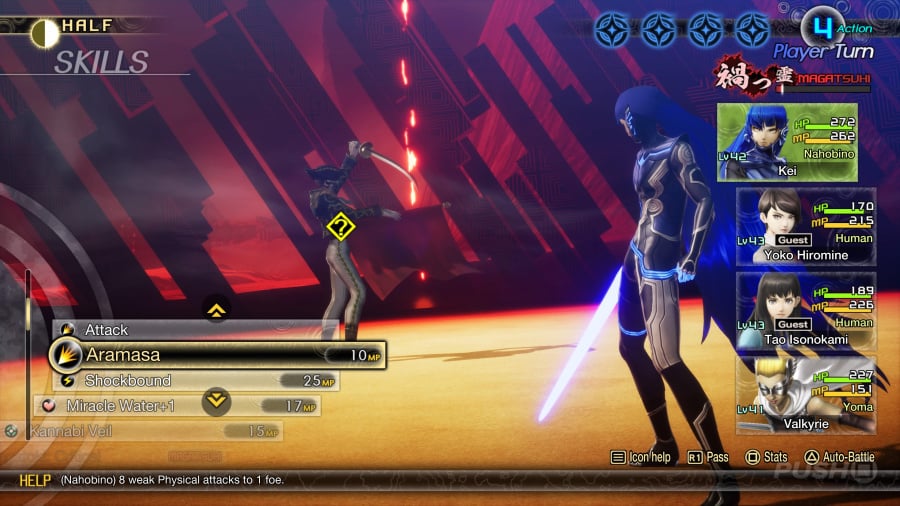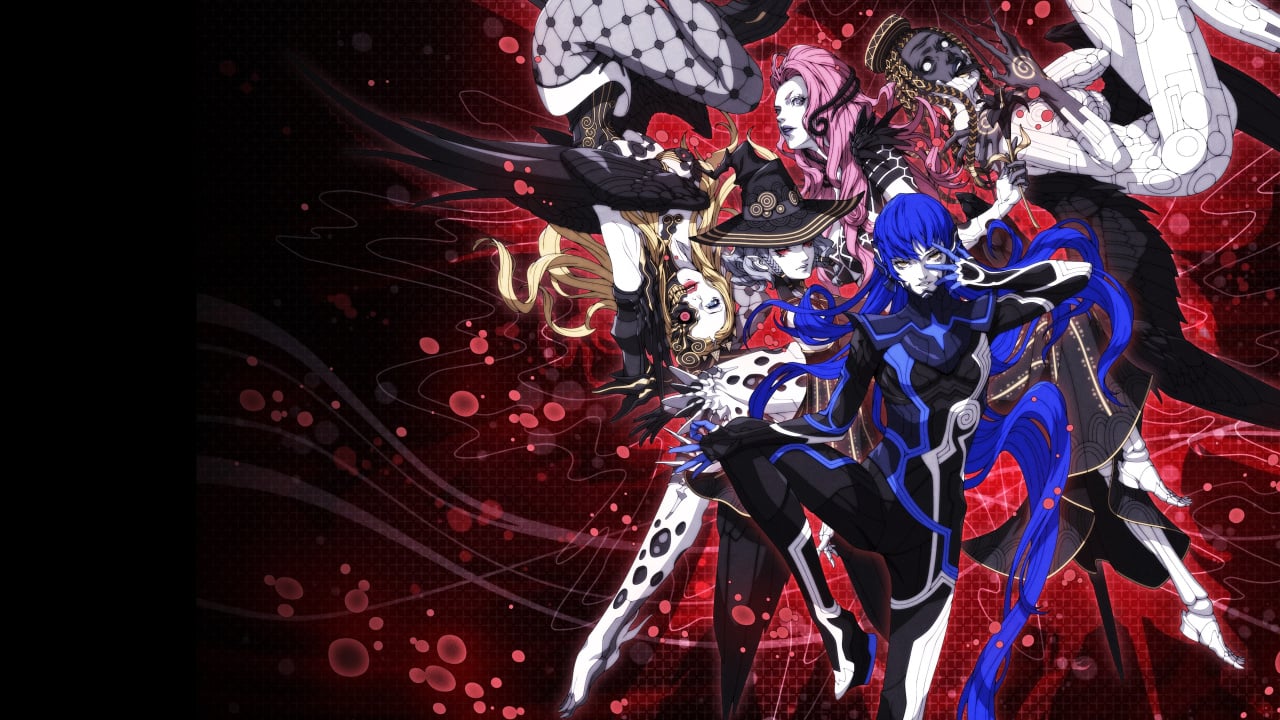
Shin Megami Tensei V: Vengeance is an enhanced re-release of Atlus’ 2021 dungeon-crawling RPG, originally exclusive to Nintendo Switch, and making its long-awaited debut on PS5 and PS4. It takes a great game and makes it even better with a host of substantial quality-of-life improvements, a slick graphical upgrade, and a new story, all running at a steady 60 frames per second. That said, it’s a much more robust experience than players of Atlus’ other franchise, Persona, might expect. It’s very combative, with its dense narrative stretches, full of pontificating about the nature of God and demons being few and far between.
The biggest draw of Vengeance is the new story, Canon of Vengeance. It introduces many new characters to face and is more engaging than the game’s original story, now known as the Canon of Creation. Players are locked into one or the other from the start, taking on the role of a demigod-turned-student known as Nahobino. While the Creation Canon tells a more traditional SMT story, mostly concerned with the machinations of Heaven and Hell, the Vengeance Canon introduces new antagonists in the form of a group of mysterious demons known as the Qadištu, as well as all new companions such as .sh. Yoko Hiromine.

Both routes initially share much of the same content, but diverge later on, and the Vengeance Canon has some completely new endings. Atlus says a single playthrough will take players around 80 hours, which is correct; less so if you’ve played the original, are familiar with its mechanics, or aren’t trying to do everything. What’s quite nice is the addition of human guest characters this time around who can fight alongside Nahobino and the captured demons, with occasional extra story bits.
Set in present-day Tokyo, the protagonist is an ordinary high school student who, after being swept away by a mysterious earthquake, finds himself in the post-apocalyptic world of Da’at, where the eternal battle between angels rages on. and demons. Nearly killed in a random accident, he is saved by a being known as Aogami, with the two uniting to create a creature known as Nahobino, neither human nor demon and closer to a god in essence. The stakes only rise from there, and Da’at’s semi-open regions correspond to actual areas of Tokyo, such as Shinjuku and Yoyogi, and serve as dense open-air dungeons full of demons to fight, chat with, or captured as you see fit.

It’s well known that Persona is a subseries of the main Shin Megami Tensei franchise – but these evolutionary paths changed almost 30 years ago now. While Persona has only become more popular, innovative and appealing to ever larger audiences, SMT has stayed true to its roots, for better or for worse. Both series have pacing issues, but if Vengeance is going to be your first SMT game, it’s worth knowing that fighting and uniting demons is the focus here, and what you’ll be spending the vast majority of your time engaging in. Everything else is secondary.
Based on the series’ elemental Press Turn exploit system, combat is a tense, turn-based affair where a single mistake or lack of concentration can result in a game-ending. Players must try to target weaknesses and, by doing so, gain extra turns to overcome the enemy. The level of difficulty is quite high and requires consideration of every move. Of course, the diabolical AI runs under the same system and will mercilessly exploit any weakness you present. If Nahobino falls at any time, it’s an instant game, and so one bad turn can seal your fate.

While quality-of-life improvements are rarely anything to write home about, in SMT V: Vengeance the inclusion of two in particular are truly game-changing: the ability to save your game anywhere and the ability to teleport back to your last visit. Leyline Fount (fast travel points / demon fusion stations, previously the only place you could save) greatly reduces the amount of payback required and the frustration experienced when combat inevitably goes wrong.
Already serving as a much more mature version of Pokémon, the addition of 40 new beasts in Vengeance means there are now over 270 demons, with many of the most powerful only available through fusion. Fusion-spawned demons can inherit their previous abilities, so you’ll spend a considerable amount of time trying to create new, more powerful monsters, adapting them to overcome the next progress-blocking boss. . All of these demons now have innate abilities, which will automatically activate under the right circumstances, and new Magatsuhi abilities, which give specific demons unique attacks and are only usable after filling the corresponding gauge.

Demon chats have gotten a bit of a buzz, and instead of being coded with paper scissors, they now include some really surprising quizzes or mini-games. Winning these mind battles will result in additional EXP and Macca (money) being awarded, and Nahobino can now chain consecutive battles together for greater risk and reward. To help with mandatory grinding, Auto-Battle has also received an overhaul and can now be split between Auto-Attack and Auto-Skill, allowing players to conserve or spend MP as needed. Meanwhile, Magatsuhi Rails cover the environment, allowing easier passage and allowing access to secret areas.
If the Nether World ever starts to get you down, Demon Haunts are newly added resting places where Nahobino can interact with demons under their command, human allies, or Aogami, depending on the situation. Demons can be given bounties found throughout the world, resulting in stat boosts, with valuable items sometimes offered in return. You can even use a free camera mode in these areas, taking happy pictures of your favorite devil.
Finally, the music is about as great as expected, with haunting, exploration-inducing soundscapes interspersed with black metal and screeching guitars for tense boss encounters. The character dialogue is also pretty good, and there’s a surprising amount of voice acting in the game, but the barking from the Demon navigators quickly becomes grating, reusing the same three lines ad nauseum.
CONCLUSION
Shin Megami Tensei V: Revenge is the ultimate way to play Atlus’ fiendish demon fusion game, with a new set of bells and whistles to smooth out what can, at times, still be a jarring gameplay experience. It’s extremely combat heavy, which can become oppressive, but working towards raising that perfect demon remains as engrossing as ever.

